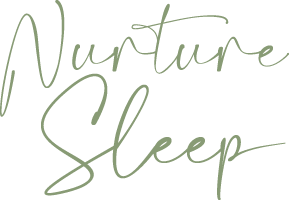
Creating an environment conducive to sleep
You may have heard the term ‘sleep hygiene’ and thought, well what does that actually mean? Let me give you the low down – essentially, sleep hygiene is all about creating an emotional and physical environment that is conducive to quality sleep.
Tired signs and putting cues into context
Trying to settle a baby who is undertired or overtired can be very challenging. So to find that sweet spot it’s helpful to cue in to your baby’s tired signs which could include decreased activity, less animation or interaction, glazed eyes, pulling at their ears or hair, slower motions, less social or vocal, less interested in their toys or people, reduced sucking and yawning. It is also helpful to put these cues into context. If your baby has just woken from a nap and is yawning and not very interactive it’s unlikely they are tired, however, if they are getting close to their nap time (whether you are following a routine or age appropriate awake windows) then these same signs will most likely indicate tiredness.
Timing of sleep
Along with paying attention to tired signs, it’s also important to follow an age appropriate routine or awake time to further help us find that sweet spot. An undertired baby may resist falling asleep or they may fall asleep only to wake a short time later. If your baby is overtired, elevated cortisol levels will make it much harder for them to fall asleep and once they are asleep they may also wake a short time later.
Pre-sleep rituals
Daily rituals and routines help us decipher what’s coming up next in our day with a sense of ease and it’s the same for babies and children. Having a predictable wind down routine that is repeated before each nap, and a more extended version before bedtime will help your baby recognise that it’s time to relax, calm down, and get ready for sleep. Your baby’s wind down routine could include reading a short book, singing a song or lullaby, a brief baby massage, a cuddle, putting them in their swaddle or sleeping bag, pulling the curtains and putting on their white noise. Repeated every day, your baby will soon associate these rituals with sleepy time.
Sleep environment
Tweaking your baby’s sleep environment so that it is more conducive to settling and restorative sleep is one aspect of good sleep hygiene where you will often get a lot of bang for your buck.
Darkness
Have you noticed that a very little baby will pretty much sleep anywhere no matter how light and noisy it is? This is because up until roughly three weeks old babies have residual maternal melatonin in their system which makes them nice and sleepy. Once this wears off however, they will essentially ‘wake up’ and settling and sleep can often become more challenging. So from three weeks of age, sleeping your baby in a dark environment for both daytime naps and night sleep is really important as darkness is what signals the brain to convert serotonin into melatonin, the sleepy hormone. A dark sleeping environment also helps limit distractions which will aid with settling. A good way to tell if your wee one’s sleeping environment is dark enough is to stand roughly two metres away from them. If you can’t tell if their eyes are open or closed then their room is dark enough.
Temperature
Finding that sweet spot also applies to room temperature as if your baby is too cold or too warm it can affect their ability to fall asleep and stay asleep. The ideal temperature for your baby’s room is between 18 and 22 degrees Celsius. By following this TOG and room temperature guide you can ensure your baby is comfortable. Bear in mind that if you add a swaddle overtop of a sleeping bag, this is generally equivalent to one layer of clothing. Dressing your baby in merino wool layers (if temperature appropriate) can also help them stay both warm and cool as merino wool helps them regulate their body temperature.

White noise
White noise is a positive sleep association and a really effective tool for both settling your baby and helping them stay asleep. To a newborn baby, silence is deafening! They have spent nine months in an environment where there is constant noise, so the right kind of background noise is very calming and soothing for them. White noise mimics the kind of sound baby had constant access to in the womb, and shushing is particularly successful as it replicates the wooshing sound your baby knows so well. Although it might seem awfully loud to you, shushing or the use of any white noise is most effective when it is around 60 decibels (about the same volume as a vacuum cleaner). White noise helps provide a consistent sleep environment and also blocks out external noises that could disrupt your baby’s sleep.
Bedding
From both a comfort and safety perspective, your baby’s bedding is also important to creating the right sleeping environment. To prevent the risk of SIDS (Sudden Infant Death Syndrome), your baby should always be put to sleep on their back on a flat, firm mattress, devoid of any cot bumpers, toys or loose blankets.





